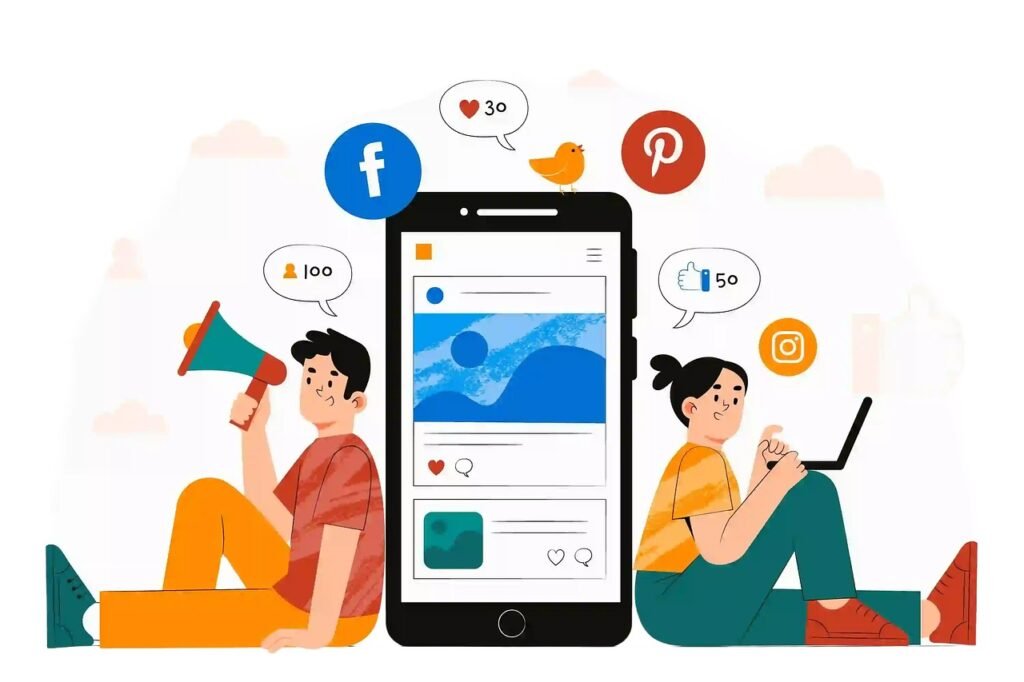- 1. How Prevalent is Digital Marketing in 2024?
- 2. Are Marketing Budgets Increasing in 2024?
- 3. How Effective is Content Marketing?
- 4. How Frequently Should Content Be Created?
- 5. How Successful is SEO in Improving Rankings?
- 6. How Trustworthy are Online Reviews?
- 7. How Do Search Engines Impact Online Experiences?
- 8. What is the Top Priority in Inbound Marketing?
- 9. How Effective are Mobile Search Ads?
- 10. What is the Main Focus of SEO Efforts?
- 11. How Much Internet Traffic is Video Content?
- 12. How Many Businesses Use Video as a Marketing Tool?
- 13. Do Consumers Prefer Content Over Ads?
- 14. How Much Content Do Buyers Consume Before Engaging with Sales?
- 15. How Important is Personalization in Marketing?
- 16. How Prevalent is Mobile Searching?
- 17. What is the ROI of Email Marketing?
- 18. How Effective is Email as a Distribution Channel?
- 19. How Does Social Media Marketing Impact Web Traffic?
- 20. How Do Consumers Use Social Media for Product Research?
- 21. How Does Social Media Impact Website Traffic?
- 22. What is the ROI of Email Marketing Compared to Other Channels?
- 23. How Common is Affiliate Marketing?
- 24. How Popular is Voice Search Among Teenagers?
- 25. How Many Marketers Invest in SEO?
- 26. How Effective is Social Media Marketing?
- 27. What is the Most Challenging SEO Tactic?
- 28. How Effective is Personalized Content?
- 29. Are Businesses Increasing Their Use of Video Content?
- 30. What is the ROI of Influencer Marketing?
- Conclusion
Digital marketing has become an essential component of business strategies worldwide. As we move into 2024, staying updated with the latest trends and statistics is crucial for businesses to stay competitive and effective in their marketing efforts. In this article, we will explore key digital marketing statistics that highlight current trends and provide actionable insights. By understanding these statistics, you can refine your marketing strategies and achieve better results.
1. How Prevalent is Digital Marketing in 2024?

In 2024, 91% of businesses are using digital marketing strategies. This widespread adoption showcases the importance of digital marketing in today’s business landscape. Companies are leveraging digital channels to reach their audience, build brand awareness, and drive sales.
Digital marketing encompasses a variety of strategies, including SEO, content marketing, social media marketing, email marketing, and more. Each of these strategies plays a vital role in attracting and retaining customers. For businesses not yet utilizing digital marketing, now is the time to start. Those already engaged in digital marketing should continually refine their strategies to stay ahead of the competition.
2. Are Marketing Budgets Increasing in 2024?
Yes, 75% of marketers have increased their digital marketing budgets in 2024. This increase reflects the growing recognition of digital marketing’s effectiveness and the need to invest more in these strategies.
With more budget allocated to digital marketing, businesses can invest in better tools, more comprehensive campaigns, and higher quality content. This investment can lead to better targeting, increased reach, and ultimately, a higher return on investment (ROI). It’s important for businesses to continually assess their marketing spend and ensure they are allocating resources to the most effective channels.
3. How Effective is Content Marketing?
Content marketing generates three times more leads than traditional outbound marketing. This statistic highlights the power of content marketing in attracting and converting potential customers.
Effective content marketing involves creating valuable, relevant, and consistent content that resonates with your target audience. This can include blog posts, videos, infographics, eBooks, and more. By providing useful information, businesses can build trust and authority, leading to increased lead generation and conversions.
4. How Frequently Should Content Be Created?
60% of marketers create at least one piece of content each day. Consistency is key in content marketing, and regular content creation helps keep your audience engaged and informed.
Creating daily content can seem daunting, but it’s important to maintain a steady flow of information to stay top-of-mind with your audience. This doesn’t mean you have to produce long-form content every day. Short updates, social media posts, and quick videos can also be effective. The goal is to remain relevant and provide ongoing value to your audience.
5. How Successful is SEO in Improving Rankings?
89% of marketers say SEO is successful in improving search engine rankings. SEO (Search Engine Optimization) is crucial for enhancing online visibility and driving organic traffic to your website.
Effective SEO involves optimizing your website’s content, structure, and technical aspects to make it more attractive to search engines. This includes keyword research, on-page optimization, link building, and ensuring a good user experience. By improving your search rankings, you can attract more organic traffic and increase your chances of converting visitors into customers.
6. How Trustworthy are Online Reviews?
82% of consumers trust online reviews as much as personal recommendations. This statistic underscores the importance of managing your online reputation and encouraging satisfied customers to leave positive reviews.
Online reviews can significantly influence potential customers’ decisions. Positive reviews can build trust and credibility, while negative reviews can deter potential customers. It’s important to actively manage your online reviews, respond to feedback, and address any issues promptly. Encouraging happy customers to leave reviews can also help improve your overall rating.
7. How Do Search Engines Impact Online Experiences?
68% of online experiences begin with a search engine. This statistic highlights the critical role of search engines in driving traffic to websites.
When consumers are looking for information, products, or services, they often start with a search engine like Google. This makes it essential for businesses to optimize their online presence for search engines. By ranking high in search results, businesses can attract more traffic and increase their chances of converting visitors into customers.
8. What is the Top Priority in Inbound Marketing?
55% of marketers say blog content creation is their top inbound marketing priority. Blogging is a powerful tool for attracting organic traffic and engaging your audience.
Blogs allow businesses to share valuable information, establish authority in their industry, and improve their search engine rankings. Regularly updating your blog with relevant content can help drive traffic to your website and keep your audience engaged. It’s important to create high-quality, informative content that addresses the needs and interests of your target audience.
9. How Effective are Mobile Search Ads?
92% of mobile searchers are more likely to buy after seeing a relevant ad. Mobile search ads can be highly effective in driving conversions and sales.
With the increasing use of mobile devices, it’s crucial for businesses to optimize their ads for mobile search. This includes creating mobile-friendly landing pages, using relevant keywords, and ensuring a seamless user experience. By targeting mobile users effectively, businesses can increase their chances of converting searchers into customers.
10. What is the Main Focus of SEO Efforts?

61% of marketers say improving SEO and growing their organic presence is their top inbound marketing priority. This focus on SEO highlights its importance in driving organic traffic and achieving long-term success.
SEO is a continuous process that involves optimizing your website’s content, structure, and technical aspects. By staying up-to-date with the latest SEO trends and best practices, businesses can improve their search rankings, attract more organic traffic, and increase their chances of converting visitors into customers.
11. How Much Internet Traffic is Video Content?
Video content accounts for over 82% of all internet traffic in 2024. This dominant presence of video underscores its importance in digital marketing strategies.
Videos are highly engaging and can convey information quickly and effectively. They cater to different learning styles and can be more memorable than text. To leverage this trend, businesses should incorporate various types of videos into their marketing efforts, such as explainer videos, product demos, testimonials, and live streams. Ensuring videos are optimized for mobile viewing and sharing across platforms can further enhance their reach and impact.
12. How Many Businesses Use Video as a Marketing Tool?
86% of businesses use video as a marketing tool. This widespread adoption highlights the effectiveness of video in engaging audiences and driving results.
Businesses use video to achieve various goals, from building brand awareness to educating customers and driving sales. High-quality, relevant video content can capture attention and convey messages in a way that text alone cannot. Companies should invest in good video production and consider the different stages of the customer journey when creating their video content.
13. Do Consumers Prefer Content Over Ads?
70% of people prefer to learn about products through content versus traditional ads. This preference indicates a shift towards content marketing as a more effective way to engage and educate consumers.
Consumers are increasingly looking for valuable and informative content rather than intrusive advertisements. By providing helpful content, businesses can build trust and establish themselves as thought leaders in their industry. This can include blog posts, videos, infographics, and other forms of content that address the needs and interests of the target audience.
14. How Much Content Do Buyers Consume Before Engaging with Sales?
47% of buyers view 3-5 pieces of content before engaging with a sales rep. This statistic highlights the importance of providing valuable content throughout the buyer’s journey.
Buyers conduct extensive research before making a purchase decision. By offering a variety of content that addresses different stages of the buying process, businesses can nurture leads and build trust. This can include blog posts, case studies, whitepapers, and videos that provide the information buyers need to make an informed decision.
15. How Important is Personalization in Marketing?
72% of consumers say they only engage with personalized marketing messages. Personalization is crucial for capturing and maintaining consumer interest.
Personalized marketing involves tailoring content and messages to individual preferences and behaviors. This can significantly enhance the customer experience and increase engagement. Businesses can use data and analytics to understand their audience better and deliver personalized content that resonates with their needs and interests.

16. How Prevalent is Mobile Searching?
58% of searches on Google are now done from mobile devices. This statistic underscores the importance of optimizing for mobile search.
With more people using their smartphones to search for information, businesses must ensure their websites are mobile-friendly. This includes having a responsive design, fast loading times, and easy navigation. Mobile optimization can improve user experience and search engine rankings, leading to increased traffic and conversions.
17. What is the ROI of Email Marketing?
Email marketing generates an average ROI of $42 for every dollar spent. This impressive return on investment highlights the effectiveness of email marketing.
Email marketing allows businesses to reach their audience directly with personalized and targeted messages. It’s cost-effective and can drive significant engagement and conversions. To maximize the ROI of email marketing, businesses should focus on building a quality email list, segmenting their audience, and crafting compelling content that encourages action.
18. How Effective is Email as a Distribution Channel?
79% of marketers say email is their most successful distribution channel. This statistic emphasizes the importance of email in digital marketing strategies.
Email remains a powerful tool for reaching and engaging audiences. It’s effective for promoting content, driving traffic to websites, and nurturing leads. Businesses should continually refine their email marketing strategies by testing different subject lines, formats, and calls to action to see what resonates best with their audience.
19. How Does Social Media Marketing Impact Web Traffic?
Social media marketing helps 75% of businesses increase their web traffic. Social media platforms are essential for driving traffic to websites and engaging with audiences.
By sharing valuable content, running targeted ads, and engaging with followers, businesses can attract more visitors to their websites. It’s important to maintain an active presence on social media, post regularly, and interact with your audience to build a strong online community.
20. How Do Consumers Use Social Media for Product Research?

54% of social browsers use social media to research products. This trend highlights the importance of having a strong social media presence.
Consumers turn to social media to discover new products, read reviews, and get recommendations. Businesses should leverage social media to showcase their products, share customer testimonials, and engage with their audience. By providing valuable information and maintaining an active presence, businesses can influence purchasing decisions and drive sales.
21. How Does Social Media Impact Website Traffic?
87% of marketers report increased website traffic due to social media. This statistic emphasizes the significant role social media plays in driving traffic to websites.
To maximize the benefits of social media, businesses should share engaging content that encourages clicks and shares. This can include blog posts, videos, infographics, and promotional offers. Consistently posting high-quality content and interacting with followers can help build a loyal community and increase web traffic.
22. What is the ROI of Email Marketing Compared to Other Channels?
53% of marketers say email has the best ROI of any marketing channel. Email marketing’s effectiveness is well-documented, making it a preferred choice for many businesses.
The high ROI of email marketing can be attributed to its direct and personalized approach. By segmenting your email list and tailoring messages to specific audience segments, you can increase engagement and conversions. Regularly analyzing email performance and optimizing campaigns based on insights can further enhance ROI.
23. How Common is Affiliate Marketing?
81% of businesses use affiliate marketing programs. This statistic highlights the popularity and effectiveness of affiliate marketing in driving sales and generating revenue.
Affiliate marketing involves partnering with affiliates who promote your products in exchange for a commission. This strategy can help businesses reach new audiences and increase sales without a significant upfront investment. To succeed with affiliate marketing, businesses should choose reputable affiliates, provide attractive incentives, and track performance to ensure a positive ROI.
24. How Popular is Voice Search Among Teenagers?
Voice search is used by 55% of teenagers on a daily basis. This growing trend underscores the importance of optimizing for voice search.
As more people use voice-activated devices like smartphones and smart speakers, businesses need to adapt their SEO strategies to accommodate voice search queries. This involves using natural language keywords, answering common questions, and ensuring your website is mobile-friendly and fast-loading. By optimizing for voice search, businesses can improve their visibility and attract more traffic.
25. How Many Marketers Invest in SEO?
64% of marketers actively invest in SEO. This statistic underscores the importance of SEO in driving organic traffic and improving online visibility.
SEO involves optimizing your website’s content, structure, and technical aspects to rank higher in search engine results. Regularly updating your SEO strategy to align with search engine algorithm changes and industry best practices is crucial for maintaining and improving your rankings. Investing in SEO can lead to sustained organic traffic growth and increased conversions.
26. How Effective is Social Media Marketing?

90% of marketers say their social media marketing efforts have increased exposure for their business. This high effectiveness rate highlights the importance of social media in building brand awareness.
Social media platforms offer unique opportunities for businesses to connect with their audience, share content, and promote their products or services. To maximize exposure, businesses should maintain an active presence, post regularly, and engage with their followers. Running targeted ads and collaborating with influencers can also help reach a broader audience.
27. What is the Most Challenging SEO Tactic?
65% of marketers say link-building is the most difficult SEO tactic. Despite its challenges, link-building remains a crucial aspect of SEO.
Link-building involves acquiring backlinks from other websites to improve your site’s authority and rankings. It requires a strategic approach, including creating high-quality content that others want to link to, reaching out to industry influencers, and building relationships with other websites. Persistence and patience are key, as link-building can take time but offers significant long-term benefits.
28. How Effective is Personalized Content?
83% of marketers indicate that personalized content is more effective. Personalization can significantly enhance the relevance and impact of your marketing efforts.
Personalized content involves tailoring your messages and offers to individual preferences and behaviors. This can improve engagement, build loyalty, and increase conversions. Using data and analytics to understand your audience and deliver personalized experiences can help businesses stand out in a crowded market.
29. Are Businesses Increasing Their Use of Video Content?
50% of marketers plan to increase their use of video content in 2024. This planned increase reflects the growing importance of video in digital marketing strategies.
Video content can capture attention, convey messages quickly, and engage audiences in a way that text alone cannot. Businesses should explore different types of videos, such as tutorials, product demos, customer testimonials, and live streams, to see what resonates best with their audience. Investing in high-quality production and regularly updating your video content can enhance your marketing efforts.
30. What is the ROI of Influencer Marketing?
Influencer marketing campaigns earn $6.50 for every dollar spent. This high ROI highlights the effectiveness of influencer marketing in reaching and engaging target audiences.
Influencer marketing involves partnering with individuals who have a significant following and influence in your industry. These influencers can help promote your products or services to their audience, driving awareness and sales. To succeed with influencer marketing, businesses should choose influencers whose values align with their brand, create authentic partnerships, and track the performance of their campaigns.
Conclusion
Digital marketing continues to evolve, and staying informed about the latest trends and statistics is essential for success. By understanding these key statistics for 2024, businesses can refine their strategies, allocate resources more effectively, and achieve better results. Whether it’s through SEO, content marketing, social media, email marketing, or video, leveraging these insights can help businesses stay competitive and drive growth in the ever-changing digital landscape.
Read Next
- How to Use ClickFunnels: An Explainer
- How to use Leadpages: An Explainer
- How to Use OptiMonk: An Explainer
- How to Use Popup Maker: An Explainer
- How to Use Beeketing: An Explainer





















Comments are closed.